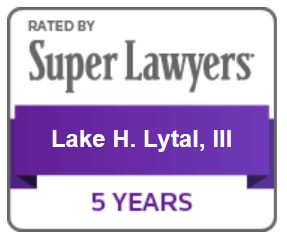The word “causation” refers to the relationship between a cause and its effect. In personal injury law, “causation” refers to the actions that led to the accident caused your injury. Although it’s a relatively straightforward definition, in a legal context, causation is more complicated, and proving causation is pivotal in the outcome of your case.

Working with the Florida personal injury lawyers at Lytal, Reiter, Smith, Ivey & Fronrath who understand how to properly apply the nuances of causation in civil personal injury suits will help you obtain maximum coverage for the costs associated with your injuries.
To schedule your free consultation and get your case moving in the right direction, contact us online or call (561) 655-1990 today.
How causation is applied in your personal injury case
The concept of causation will be applied to your case to determine whether you should be personally liable for the costs of your injuries or if someone else should bear that responsibility.
If someone else is liable, they and their insurance company (where applicable) will be responsible for compensating you for the damages you claim that you can adequately prove with evidence.
Determining fault in your accident requires a consideration of two types of cause: factual and proximate.
Factual or actual cause
Factual cause is the actual cause of the accident which is often established through the use of the “but-for-test”. Under this test, you consider if your injuries wouldn’t have occurred if not for a certain incident or accident.
Proximate causation
Proximate cause means that it’s “more likely than not” that the defendant’s conduct was a substantial factor in the end result that occurred, such as your injuries. This means that the plaintiff must prove that the defendant’s actions were a substantial cause of your injuries.
A negligent party is liable for damages they cause
The legal concept of causation is coupled with the concept of negligence. If a party is found to be negligent in their actions that caused your injuries, they will be liable for your damages.
Negligence consists of four parts: duty, breach, causation, and damages. This means that in order for a party to be found negligent, they must have owed you a duty or responsibility, they breached that duty, that their breach caused the accident or incident that led to your injuries, and finally that you were injured or suffered damages.
For example, employers have a duty to keep the workplace safe for employees. If the employer knew that there was exposed electrical wire and did nothing to fix it, and an employee was electrocuted by the wire which resulted in the employee incurring medical bills and missing work or losing income, the employer would be liable for those damages.
The importance of Palsgraf v. Long Island Railroad Company
When discussing actual and proximate cause, Palsgraf v. Long Island Railroad Company, a 1927 appellate case out of New York, is often used as a well-known example taught in law school. In this case, a woman (Ms. Palsgraf) was injured by a scale that fell after a guard pushed a man who jumped onto the train into the car, which caused him to drop his package that exploded when it made impact with the tracks.
The shock of the explosion caused a scale to fall on Ms. Palsgraf, causing her to sustain injuries. The courts held that had the railroad guards not been negligent, a package containing explosives wouldn’t have fallen onto the tracks, and Ms. Palsgraf wouldn’t have been injured. Therefore, the guards’ acts were the proximate cause of her injuries and she received compensatory damages as a result of their actions.
Discuss your case with an experienced personal injury lawyer
Injured and it wasn’t your fault? Connect with the Florida personal injury lawyers from Lytal, Reiter, Smith, Ivey & Fronrath by contacting us online or calling (561) 655-1990.












